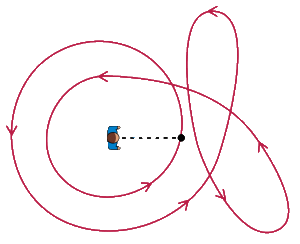2D Graphics¶
Rasterization¶
-
Convert 2D primitives (lines, polygons,filled/patterned regions, etc.) into a raster image
- For output on a monitor/printer
- Rasterization or Scan Conversion


- 液晶:亮度通过偏振片控制,因此显示黑色时会出现漏光问题
- Raster Graphics Packages
- The efficiency is critical to the performance of a display system
- The raster graphics package is typically a collection of efficient algorithms for scan converting (rasterizing) primitives
- High performance graphics workstations have most of these algorithms implemented in hardware
- Modern PCs (video cards)
Line Segment¶
- Coordinate System

- The line is a powerful element used since the days of Euclid to model the edges in the world
-
Given a line segment defined by its endpoints, determine the pixels and color which best model the line segment.
-
Requirements
- the selected pixels should lie as close to the ideal line as possible
- the sequence of pixels should be as straight as possible
- all lines should appear to be of constant brightness independent of their length and orientation
- should start and end accurately
- should be drawn as rapidly as possible
- should be possible to draw lines with different width and line styles
-
Equation of a line
- \(y=mx+c\)
- 对于线段端点 \(P(x_1,y_1),P(x_2,y_2)\)
- 可以计算斜率,x每增大单位长度,y增大m
-
Digital Differential Analyzer(DDA)
- 只考虑first octant

- use differential equation
- increment x by 1
- \(x_i=x_{i,prev}+1,y_i=y_{i,prev}+m\)
- \([x_i,round(y_i)]\)
-
DDA is an incremental algorithm, uses floating point operations, which are very cleverly avoided in an algorithm.
-
Bresenham's Line Drawing
- 小于45°时,y只有两种选择,不变或加1



Circles¶
-
scan converting a circle
-
Bresenham's Algorithm

- 加速的问题:sin和cos的误差会不断累积
Polygon Filling¶
- representation:

-
filling: vertex representation -> lattice representation
- fill a polygonal region -> test every pixel in the raster to see if it lies inside the polygon
-
even-odd test: 引一条射线与图形交点奇数个则图形内,偶数个则图形外

- winding number: 按顺序遍历所有顶点和此点连线对应向量,根据旋转过的角度判断是否在图形内。或从一点做射线,在此之前首先制定一个多边形环绕方向,由上往下为负,由下往上为正,判断此射线和边交点的方向,为0则在多边形外,否则多边形内


-
Scan-line Method
- Use intersections between region boundaries and scan lines to identify pixels that are inside the area
- Exploit the coherence
- Spatial coherence: Except at the boundary edges, adjacent pixels are likely to have the same characteristics
- Scan line coherence: Pixels in the adjacent scan lines are likely to have the same characteristics
- From top to bottom, from left to right
- the intersections are paired and in-between pixels are set to the specified intensity
- Algorithm
- Find the intersections of the scan line with all the edges in the polygon
- Sort the intersections by increasing X-coordinates
- Fill the pixels between pair of intersections

- Efficiency in Scan-line Method
- Intersections could be found using edge coherence
- the X-intersection value \(x_{i+1}\) of the lower scan line can be computed from the X-intersection value \(x_i\) of the preceding scanline as \(x_{i+1}=x_i+1/m\)
- List of active edges could be maintained to increase efficiency
- Efficiency could be further improved if polygons are convex, much better if they are only triangles
- Special cases

- Advantages:
- efficient
- each pixel is visited only once
- shading algorithms could be easily integrated to obtain shaded region
-
Seed Fill Algorithm

Clipping¶
-
Clipping: removal of content that is not going to be displayed
- 屏幕外,camera后,too close or too far
- usually done before scan converting to make more efficient